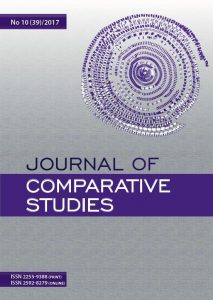Virtual Reality in World and Latvian Science Fiction
Virtual Reality in World and Latvian Science Fiction
Author(s): Bārbala SimsoneSubject(s): Language and Literature Studies, Studies of Literature, Comparative Study of Literature, Latvian Literature, Other Language Literature
Published by: Daugavpils Universitātes Akadēmiskais apgāds “Saule”
Keywords: computer games; cyberpunk; dystopia; science fiction; virtual reality;
Summary/Abstract: The objective of this article is to examine the depiction of virtual reality and the pertinent storytelling characteristics in science fiction written by foreign and Latvian authors. In world science fiction, the idea of virtual reality and computer-generated worlds as a particular segment of reality appeared as early as after World War II, yet it was after the evolution of a specific sci-fi subgenre, known as cyberpunk, that it became especially popular. The novel “Neuromancer” by William Gibson (1984) is considered as the defining oeuvre of this type of science fiction. Writers did, however, continue to study virtual reality not only using the peculiar noir aesthetics pertaining to cyberpunk, but also in works of a lighter character. Nowadays the concept of virtual reality appears in YA [young adult – ed.] literature dealing with topics related to computer gaming as well as part of another popular science fiction branch, the dystopia. This article looks into several acclaimed YA novels published in the recent years and containing both computer-game related and dystopian elements. Until now, in the not-so-wide array of Latvian science fiction the idea of virtual reality has received little attention, but this article inspects the science fiction works written over the last five to six years (2010–2016), in which virtual reality is assigned a comparatively significant role, thus reflecting current global trends. This article examines the different aspects of virtual reality explored in the works of Latvian sci-fi writers and seeks and analyses the parallels of the said works with the aforementioned universal tendencies – especially regarding the dystopian traits.
Journal: Komparatīvistikas almanahs
- Issue Year: 2017
- Issue No: 10(39)
- Page Range: 28-47
- Page Count: 20
- Language: English

